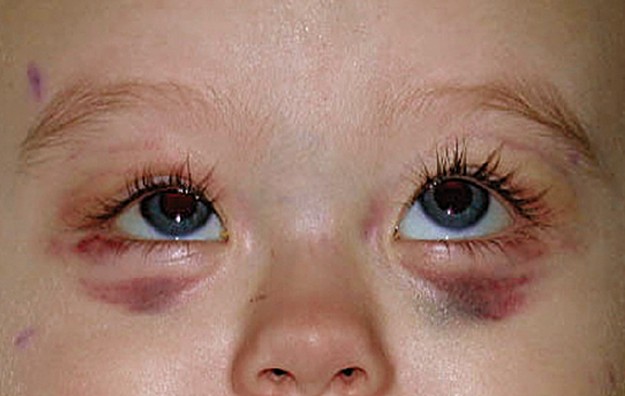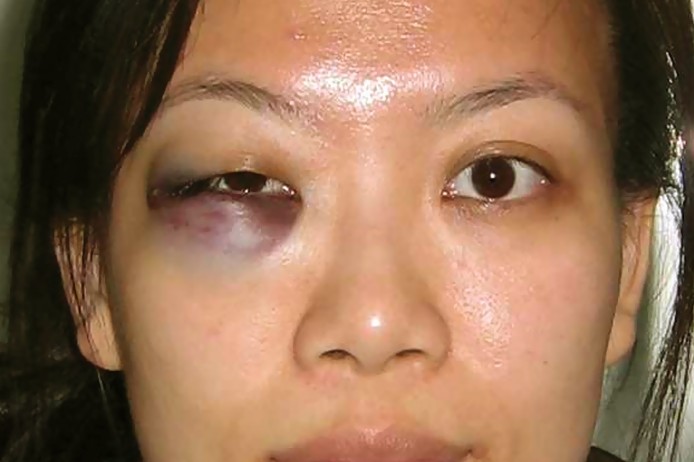Ecchymosis
Last reviewed by Dr. Raj MD on January 12th, 2022.
What does Ecchymosis mean?
This is a medical term that is used to describe a bruise that is over one centimeter in diameter. For bruises that are smaller than one centimeter in diameter but no larger than three millimeters was called petechiae and if they were over three millimeters but no more than ten millimeters in diameter was called purpura.
With this type it did not become pale when you applied pressure to it. These bruises can appear on mucous membranes or your skin. A bruise is diagnosed as a collection of blood outside of your blood vessels or a type of hematoma. It is a relatively minor internal bleeding. A broader definition of ecchymosis is the escape of blood into your tissues from blood vessels that have ruptured.
Ecchymosis Symptoms
With this medical condition there are not too many symptoms. Ecchymosis is usually characterized by the appearance on your skin a spot that is purple or reddish-blue in color. They can also be painful or painless but generally there is some pain in the area that is not too bad but there are some people who have acute pain.
Stages of a bruise
There are different stages in ecchymosis which are:
- In people with a light skin tone ecchymosis are more visible. In the beginning the medical condition is characterized by spots that are reddish in color. Within hours after the injury it will appear like red patches.
- In a few days the patches will start to take on a green colored appearance
- In time the green spots will slowly turn yellow in color. This means that the ecchymosis that they are almost nearing recovery.
- The next step is when the spots slowly start to assume a brown appearance. Ultimately they will take on the color of your skin and heal completely.
Causes
An ecchymosis is usually cause by blunt force trauma that will cause your small blood vessels to break under the surface of your skin. When they happen they appear on your skin as a dark spot. They can also happen if you have a deficiency of vitamin C causing a condition called Scurvy. It can also be cause by a medical condition involving your platelets called idiopathic thrombocytopenic purpura (ITP).
Other medical causes can include:
- Cirrhosis – this is a chronic medical condition that affects your liver. When the normal functioning of your liver is disturbed it can lead to blood cell irregularities. This can be a reason for seeing the ecchymosis spots on your skin.
- Leukemia – this disease is characterized by an abnormal increase in the number of white blood cells which could result in ecchymosis spots on your skin.
- Acute renal failure – when a person has acute renal failure of your kidneys it can cause accumulation of waste materials to be in your blood causing these spots on your skin.
- Liver disease – your liver is responsible for many functions including the purification and storage of blood. If you have a disorder in your liver it could affect the filtering and storage of your blood, causing the ecchymosis spots.
- Myelofibrosis – this is a medical condition that leads to a fibrosis of your bone marrow and can cause problems like anemia. The reduced blood count can also cause ecchymosis.
- Grey Turner’s syndrome – this normally happens as a precursor of acute pancreatitis.
Ecchymosis in Children
One reason for a child to have ecchymosis is the result of child abuse. If it happens on their foot it could be due to falling down while they are playing. If a child has black eye it could have happened during a fight with a peer or sibling. If ecchymosis spots appear in newborns it could be because of low platelets or a vitamin C deficiency.
Diagnosis
It can be diagnosed by looking at the discoloration. If you go to see your physician they will take a medical history and ask you if you have done anything to cause trauma or hematoma.
Ecchymosis Pictures
Treatment
You can treat an ecchymosis at home by doing these things during the healing process.
- Resting it
- Put an ice pack on it
- Keep it elevated as much as you can
- Take over-the-counter pain medication
Later in the healing process you can do:
- Light stretching exercises
- Light massage
- Apply heat
Any of these can be done as long as it does not cause pain. If the ecchymosis is extremely painful, bruising is frequent, or does not improve after several days it is important to see your physician.



